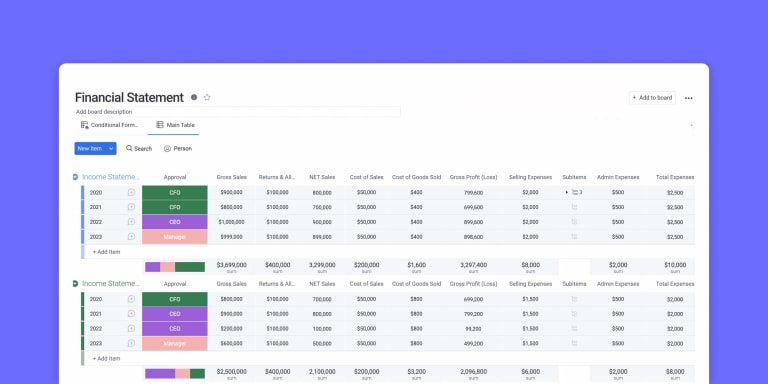Excel Links Not Working for Dummies
The 9-Second Trick For Excel Links Not Working
Table of ContentsThe Ultimate Guide To Excel Links Not WorkingLittle Known Questions About Excel Links Not Working.The Ultimate Guide To Excel Links Not WorkingMore About Excel Links Not WorkingRumored Buzz on Excel Links Not Working

Nonetheless, array estimation functions like either can not handle entire column referrals or determine all the cells in the column. User-defined features don't instantly identify the last-used row in the column and, therefore, regularly calculate entire column recommendations inefficiently. It is simple to program user-defined functions so that they identify the last-used row.

Excel Links Not Working Can Be Fun For Anyone
Using the formula for a vibrant range is normally more suitable to the formula since has the disadvantage of being an unstable function that will certainly be calculated at every recalculation. Performance reduces since the feature inside the vibrant range formula need to analyze several rows. You can decrease this performance decline by saving the part of the formula in a separate cell or specified name, and afterwards referring to the cell or name in the vibrant range: Counts!z1=COUNTA(Sheet1!$A:$A) Offset, Dynamic, Array=OFFSET(Sheet1!$A$ 1,0,0, Counts!$Z$ 1,1) Index, Dynamic, Variety=Sheet1!$A$ 1: INDEX(Sheet1!$A:$A, Counts!$Z$ 1+ROW(Sheet1!$A$ 1) - 1,1) You can also make use of functions such as to create dynamic varieties, however is unpredictable and also constantly computes single-threaded.
Utilizing numerous vibrant arrays within a solitary column requires special-purpose counting functions. Making use of numerous vibrant varieties can reduce efficiency. In Workplace 365 version 1809 and later on, Excel's VLOOKUP, HLOOKUP, as well as MATCH for exact match on unsorted information is much faster than ever when searching for multiple columns (or rows with HLOOKUP) from the same table array.
If you use the specific match choice, the estimation time for the function is symmetrical to the number of cells scanned before a match is discovered. Lookup time making use of the approximate match alternatives of,, as well as on arranged data is quick and also is not substantially enhanced by the size of the array you are looking up.
Excel Links Not Working Can Be Fun For Anyone
Ensure that you understand the Continued match-type as well as range-lookup options in,, as well as. The following code instance shows the phrase structure for the function. MATCH(lookup worth, lookup selection, matchtype) returns the biggest match less than or equivalent to the lookup worth when the lookup selection is sorted ascending (approximate suit).
The default option is approximate suit arranged rising. The following code instance reveals the syntax for the and functions.
VLOOKUP(lookup value, table variety, col index num, range-lookup) HLOOKUP(lookup value, table array, row index num, range-lookup) returns the biggest match much less than or equal to the lookup worth (approximate suit). Table range should be arranged ascending.
Some Of Excel Links Not Working
If your data is sorted, but you desire a specific match, see Use two lookups for arranged data with missing worths. Attempt making use of the and also works rather of. Although is a little faster (approximately 5 percent faster), easier, and also makes use of less memory than a mix of and, or, the added versatility that and offer often allows you to considerably conserve time.
The feature is fast and also is a non-volatile feature, which speeds up recalculation. The function is also quick; nevertheless, it is an unstable function, and also it occasionally significantly increases the time taken to refine the computation chain.$A$ 2:$F$ 1000, SUIT(A1,$A$ 1:$A$ 1000,0),3) Because specific suit lookups can be slow, consider the adhering to alternatives for enhancing performance: Make use of one worksheet.
When you can, the data initially (is rapid), and utilize approximate match. When you must make use of an exact suit lookup, limit the variety of cells to be checked to a minimum. Usage tables as well see this here as structured references or vibrant range names as opposed to describing a multitude of rows or columns.
The 5-Minute Rule for Excel Links Not Working
Two approximate suits are considerably faster than one specific match for a lookup over greater than a few rows. (The breakeven factor has to do with 10-20 rows.) If you can sort your information however still can not make use of approximate match since you can not be certain that the worth you are searching for exists in the lookup array, you can utilize this formula: IF(VLOOKUP(lookup_val, lookup_array,1, True)=lookup_val, _ VLOOKUP(lookup_val, lookup_array, column, True), "notexist") The initial component of the formula works by doing an approximate lookup on the lookup column itself.
VLOOKUP(lookup_val, lookup_array, column, True) If the response from the lookup column did not match the lookup worth, special info you have an absent value, and the formula returns "notexist". Know that if you look up a value smaller sized than the tiniest value in the list, you obtain an error. You can handle this error by utilizing, or by including a tiny test value to the list.
Beginning with Excel 2007, you can use the function, which is both simple and fast. IF IFERROR(VLOOKUP(lookupval, table, 2 FALSE),0) In earlier versions, a basic yet slow-moving means is to use a function which contains two lookups. IF(ISNA(VLOOKUP(lookupval, table,2, FALSE)),0, _ VLOOKUP(lookupval, table,2, FALSE)) You can avoid the dual exact lookup if you use exact as soon as, save the cause a cell, and after that check the outcome before doing an.